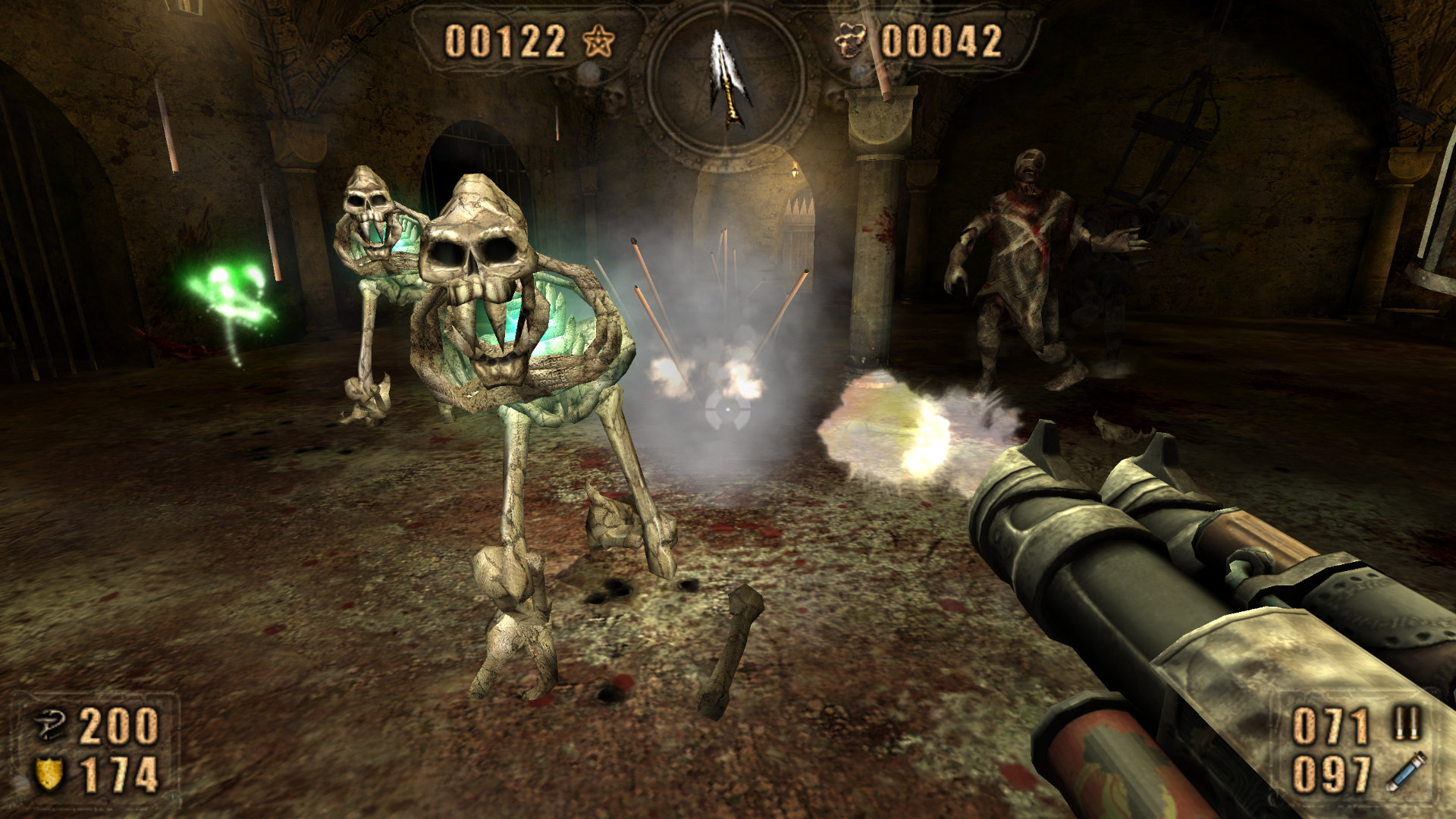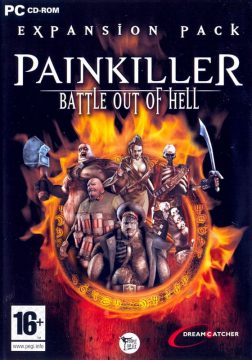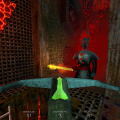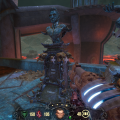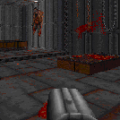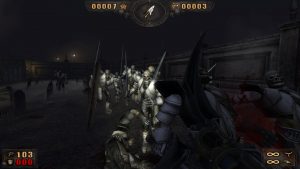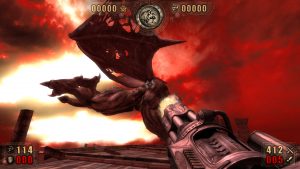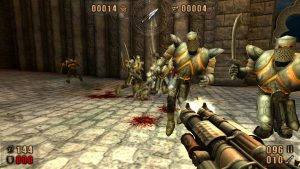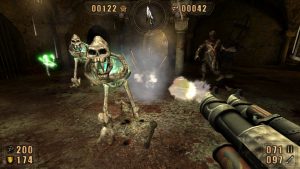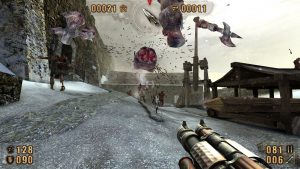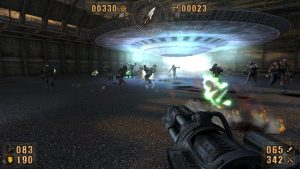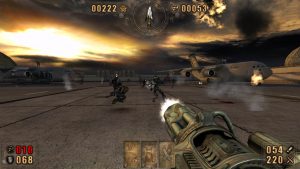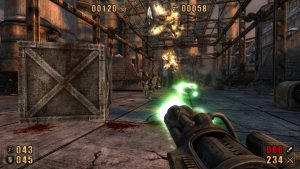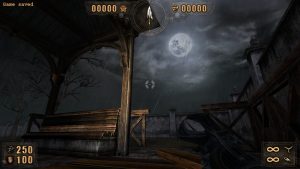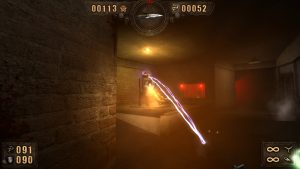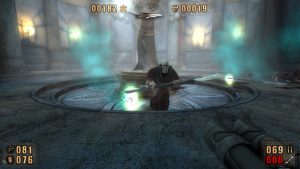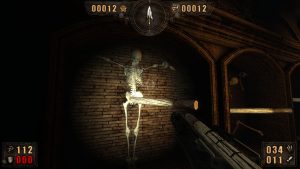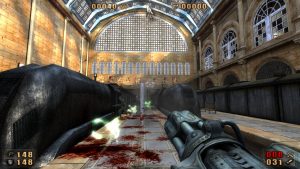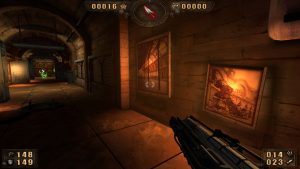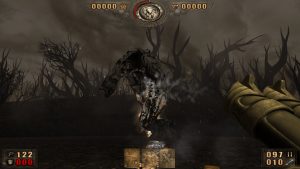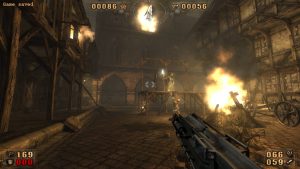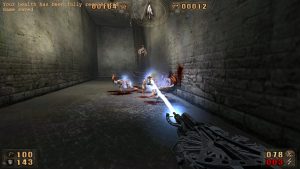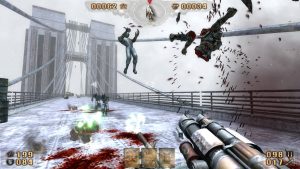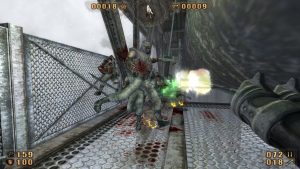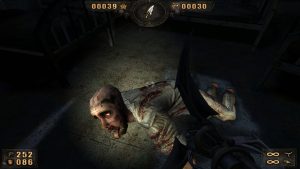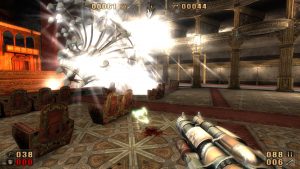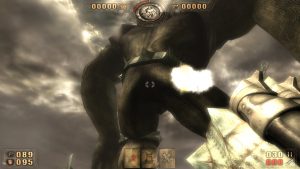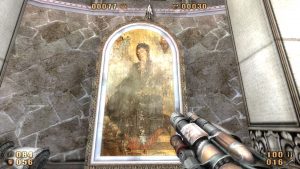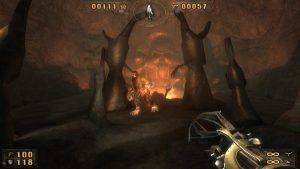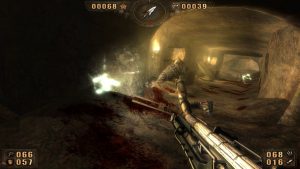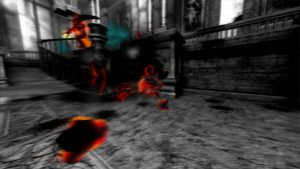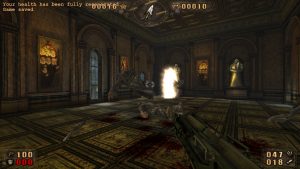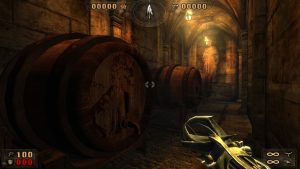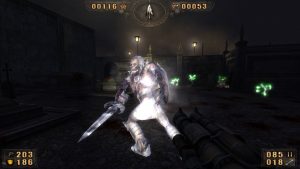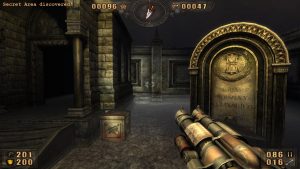The 2000s and early 2010s were a weird time for the classic FPS. With military shooters starting to take over with the boom of WWII games that would eventually become the modern military FPS, alongside the regenerating health and limited load outs of Halo, the torch for the classic run and gun monster massacre was limited to just two franchises, before later attempts started to compromise with ideas from the aforementioned Halo and Call of Duty. The most famous of the two was definitely Serious Sam, which has entered a sort of creative renaissance with the boomer shooter revival. The other series, however, might have an even bigger footprint of impact, one most people may not even be aware of.
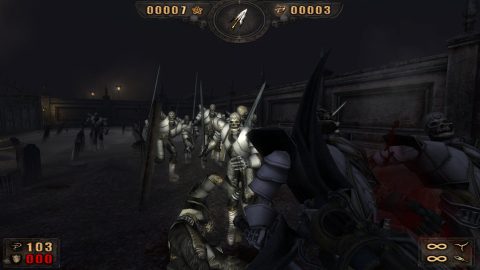
That series was Painkiller, starting with a 2004 PC game by People Can Fly. You may remember the studio more as the co-developers of Gears of War, Bulletstorm, and a little cult title you may not have heard of called Fortnite. Painkiller was their start, and the beginning of a massive domino effect that would shape the landscape of the FPS genre for decades to come. This is due mainly to former studio staff leaving to form their own studios, creating a surge of games that bare the DNA of this one game. This even includes project lead Adrian Chmielarz, who went on to create The Astronauts, the studio behind The Vanishing of Ethan Carter, and share hot takes. If you’ve played, say, the Shadow Warrior reboot series from Flying Wild Hog, congrats, you have experienced work of Painkiller devs, and there’s so many other examples.
The legacy certainly isn’t Painkiller as a series itself. To say this franchise was mishandled is like saying water is wet and fire is hot. The first game quite slaps, though, and even its lesser moments are respectable in the team’s attempts to experiment and try things you normally didn’t see from games like this. Some of those ideas worked, and helped make the game into a very unique experience no other game in the FPS genre quite matches.
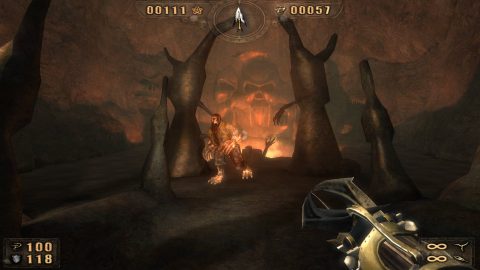
The story is both simple and surprisingly involved, at least for the genre, told in FMV cutscenes that have a moody edge to them. A man named Daniel Garner (played by Cam “Leonardo” Clark) and his wife Catherine die in a car crash, the latter going to Heaven, while Daniel remained in purgatory. An angel named Samael gives Daniel a chance to go to Heaven by helping take our four of Hell’s generals (Hell & Damnation would later add a detail suggesting Daniel was a mercenary of some sort to explain why he guns so good and didn’t get to Heaven), which he accepts to finally reunite with his love. Along the way, he ends up meeting Eve (yes that one) and a friendly demon named Asmodeus, who help him on his quest, which ends up being more complicated then first thought.
The structure is you get around five levels or so roughly every chapter, with a boss at the end, though your difficulty decides how many levels will be open to you (also decides your ending). This matters more then you’d expect thanks to the card system. Every level has an extra objective attached, like finding all secrets or collecting a certain amount of gold, to unlock a card. Gold can be used to put cards in your load out, black ones offering passive bonuses, and gold ones active abilities you can use once per level with a button press. These abilities range from damage boosts to slow-mo, among other fun stuff.
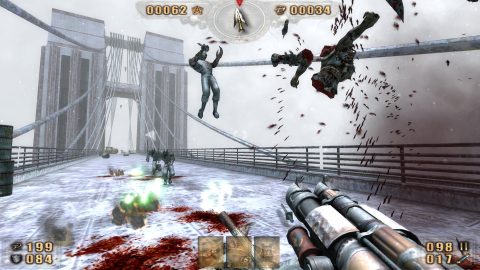
On top of this, Daniel can collect the souls of his enemies once their bodies dissipate, getting 66 turning him into a demon for a short time, as the screen becomes black and white and enemies red, with a one hit kill wave of death replacing your guns. The eccentricities of the game go further with the actual weapons, which all have unexpected alt-fires, the most normal stuff being a rocket launcher with a chaingun, and the more exotic stuff being something like a shotgun having a freeze shot (useful for taking out tanky enemies with two shots). Even your starting melee weapon, the titular Painkiller, is an extremely useful mess of blades that can shoot out an energy beam chain.
What sticks out most, however, is the mixture of enemies having often complex melee animations and their havok physics. Boy, are their physics. It’s not just objects, but enemies as well, as they rag doll in really fun ways, and their bodies remain as physical objects that can affect the rhythm of play. You might accidentally fire on a body with a rocket while in the heat of a fight, having it blow up in your face. Saving ammo with the painkiller alt-fire might get complicated by launching dead enemies closer to you while trying to get at those alive behind them if you get trigger happy. The animations add to the overall effect, a lot of the early game feeling like a sort of dance you have to learn to effectively deal with enemies. That plus Daniel’s absurdly fast bunny hops results in hectic fun, though things start to dip a bit when the hitscanners come out.
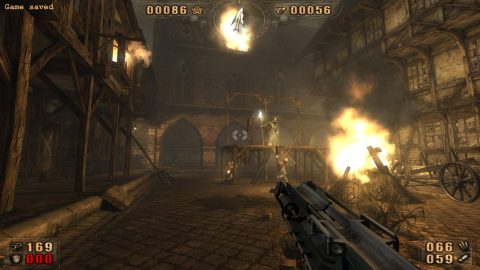
Even stranger is that there’s attempts to have puzzle solving bits with some enemies. A small handful of moments in the campaign have outside the box solutions, like killing an invincible vampire hulk by jumping to a ledge in a pit and shooting some boards above to drench it in sunlight. These are cool ideas, but they are so non-intuitive that you do not have to look far to find confused forum goers asking about these moments in befuddled frustration. The actual bosses fair better here, like the swamp boss require you to blow up swamp bubbles near it to put it in a pain state, with pretty easy to read feedback. The non-puzzle bosses are somehow the opposite, with health bars so hard to read and a complete lack of feedback that it’s difficult to tell if you’re hurting them at all.
This makes for an interesting stew of fun mobs and little spikes of annoyance, held together with the style of the game. The purgatory setting is used as an excuse to have Daniel go just about everywhere, the uniting aesthetic being seeming normal, modern places being devoid of any signs of life, and instead being populated by various grotesque and imaginative monsters (and also an alien spaceship at Area 51). The demons on display have a ton of cool designs and functions, each looking like something from a metal album cover, with a wide swatch of metal subgenres being represented. The sound design is solid for the era, while the soundtrack can best be described as charmingly generic. Lots of grungy guitars and distortion, not really sticking out much, but perfectly complimenting demonic carnage.
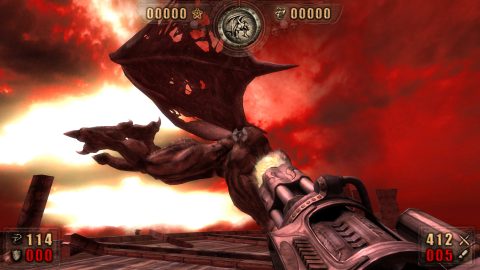
Painkiller had a lot of release shenanigans. Along with bundles with its sequel expansions, there was a budget “special edition” that had no cutscenes and multiplayer, and only half of the levels. An expansion called Battle out of Hell later released with a continuation of the game’s story, wrapping up fully on the hardest difficulty. Gold and Black editions collected everything (Gold using several CDs and Black using a single DVD), along with a level editor and bonuses like a very goofy making-of feature. The Black edition is what you’ll find on digital storefronts these days. There’s also Painkiller: Hell Wars, a sort of remix port of the original and Battle Out of Hell, made exclusively for the Xbox. It’s gotten good reviews, but is noted as being a tad buggy. There was also a little iOS and Android game called Painkiller: Purgatory that looks painfully slow, so don’t worry too much on that one.
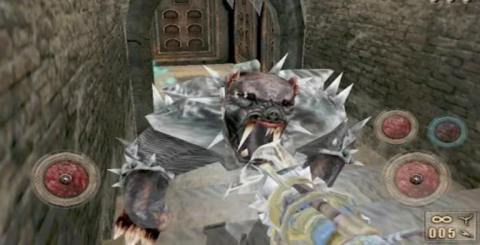
Painkiller: Purgatory
Painkiller holds up well, especially with a fan patch for the PC version to help with widescreen support and stability. It’s a really unique shooter with a rhythm all its own, and a lot of flavor in its grim dark, but still tongue in cheek, industrial horror vibe. As a stand alone game, it makes a name for itself and is well worth trying or revisiting to see how it compares to modern retro revival trends.
But there are also five sequels, and brother, they’re not enough painkillers in the Hell to stop the headache you’re about to feel.
